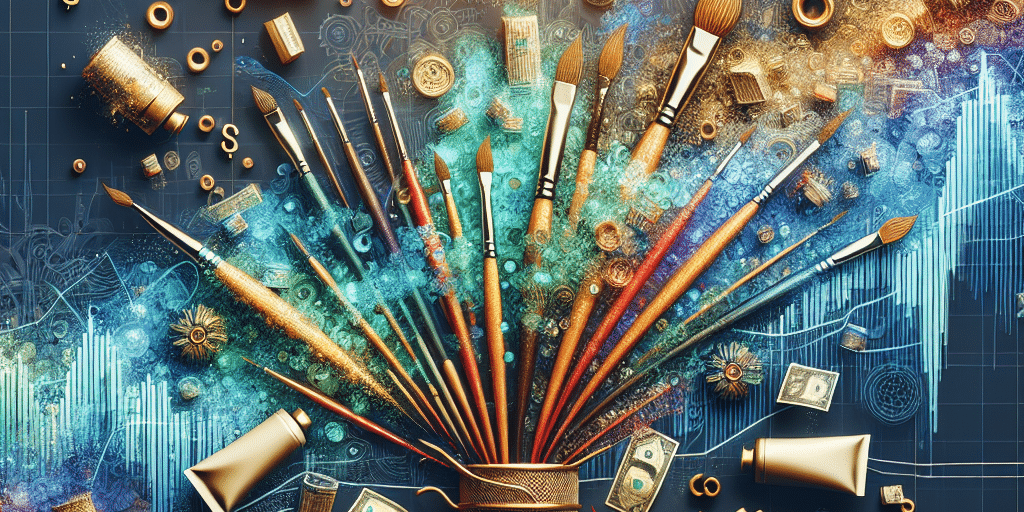Title: Decoding the Art Market: Trends and Forecasts for the Future
The art market, a complex web of passion, investment, and cultural influence, is in a constant state of flux. As it stands at the intersection of finance and aesthetics, understanding its evolution is both a challenge and a necessity for collectors, investors, and artists alike. This article delves into the current trends shaping the art market and offers forecasts for the future, providing insights into a dynamic and often opaque industry.
Current Trends Shaping the Art Market
-
Digital Transformation and NFTs: The rise of blockchain technology and Non-Fungible Tokens (NFTs) have disrupted traditional art market models. NFTs represent a new frontier for digital art and ownership, offering artists a novel way to monetize their work directly and granting buyers transparency and proof of provenance. Despite the initial hype cooling, NFTs remain a powerful tool for digital artists and are reshaping how art is bought and sold.
-
Globalization and Market Access: Art is more global than ever, with emerging markets in Asia, Latin America, and Africa gaining prominence. Collectors from these regions are increasingly influencing market trends and are a driving force behind the diversification of art investment portfolios. This globalization brings cultural cross-pollination, with a greater appreciation for non-Western art forms and artists.
-
Sustainability and Ethical Practices: With growing awareness around climate change and ethical practices, there’s a rising demand for sustainability in the art world. This involves more eco-friendly production practices and increased scrutiny on the ethical provenance of artworks, ensuring that art pieces are acquired fairly and legally.
-
Diversity and Inclusion: There is a concerted effort across the art world to foreground diverse voices and stories. Exhibitions and galleries are increasingly spotlighting artists from underrepresented backgrounds, responding to a more socially conscious collector base that values diverse narratives.
- Online Sales and Virtual Exhibitions: The pandemic accelerated the shift to online platforms for buying and selling art. Online sales have proven not only viable but essential, with virtual exhibitions and auctions becoming a staple. This accessibility allows a broader audience to participate in the market, driving further democratization in art collecting.
Forecasts for the Future
-
Integration of AI and Machine Learning: Artificial Intelligence is poised to play a more significant role in the art market. From provenance verification to predictive analytics in art investment, AI could offer tools that democratize and streamline operations, making art collecting more accessible and informed.
-
Sustainable Art Practices: As climate concerns intensify, artists and galleries will likely adopt more sustainable practices, from using environmentally friendly materials to reducing the carbon footprint of exhibitions. Companies and collectors may prioritize sustainability as a critical criterion for acquisitions, fostering a greener art ecosystem.
-
Continued Rise of Digital Platforms: Digital platforms are here to stay, with improvements in virtual reality and augmented reality promising more immersive experiences for art lovers. These technological advances could make virtual galleries indistinguishable from physical ones, potentially revolutionizing how art is experienced and consumed.
-
Regional Market Shifts: While established markets in Europe and North America remain robust, the fastest growth is expected in Asia, particularly China. This region’s influence will shape global art trends, challenging Western dominance and potentially leading to a new cultural paradigm.
- Evolving Collector Demographics: The demographic of art collectors is changing, with millennials and Gen Z emerging as significant players. These groups are more tech-savvy and value-oriented, likely to drive demand for art that reflects social issues, diversity, and digital innovation.
Conclusion
The art market of tomorrow will be more digital, diverse, and globally interconnected. Understanding these trends and adapting to changes will be vital for stakeholders looking to navigate this vibrant landscape. As art continues to reflect and influence societal shifts, those who remain informed and adaptive will find opportunities in its evolving narrative. The future of the art market holds great promise, balancing tradition with innovation in a world increasingly defined by rapid change.







